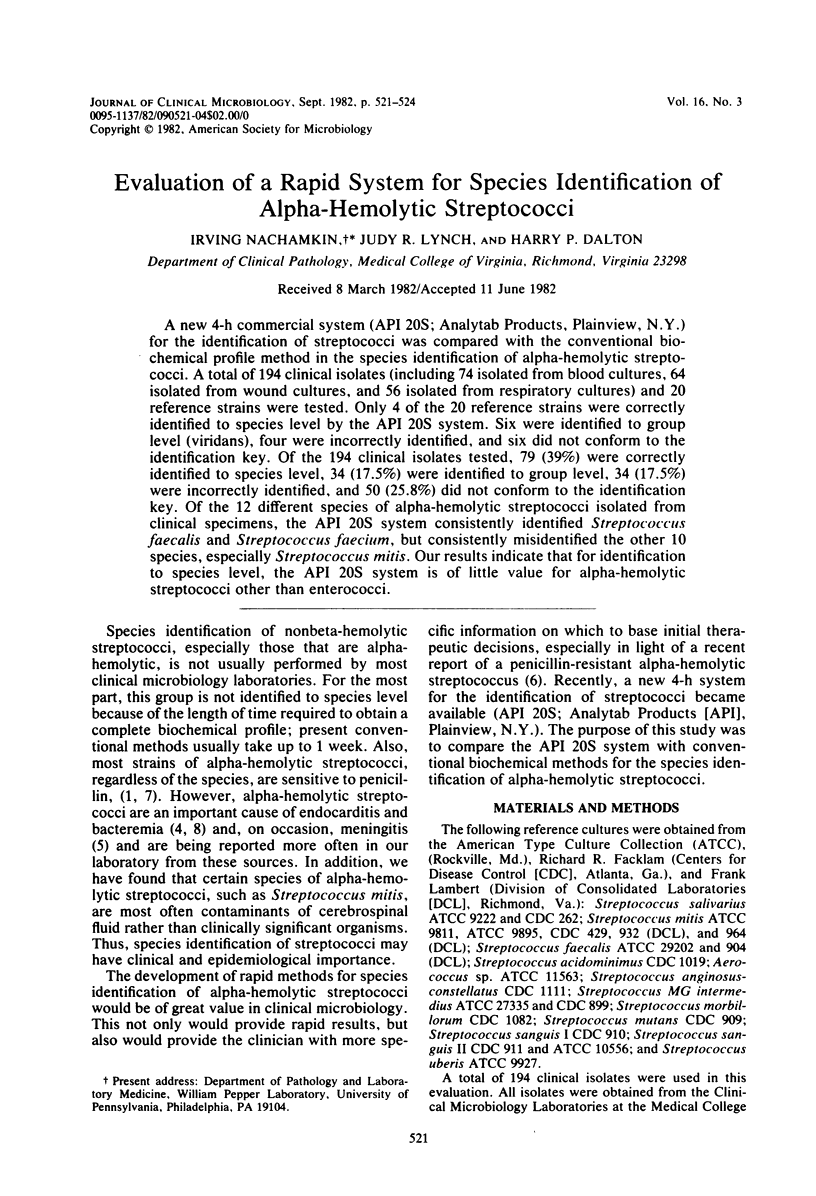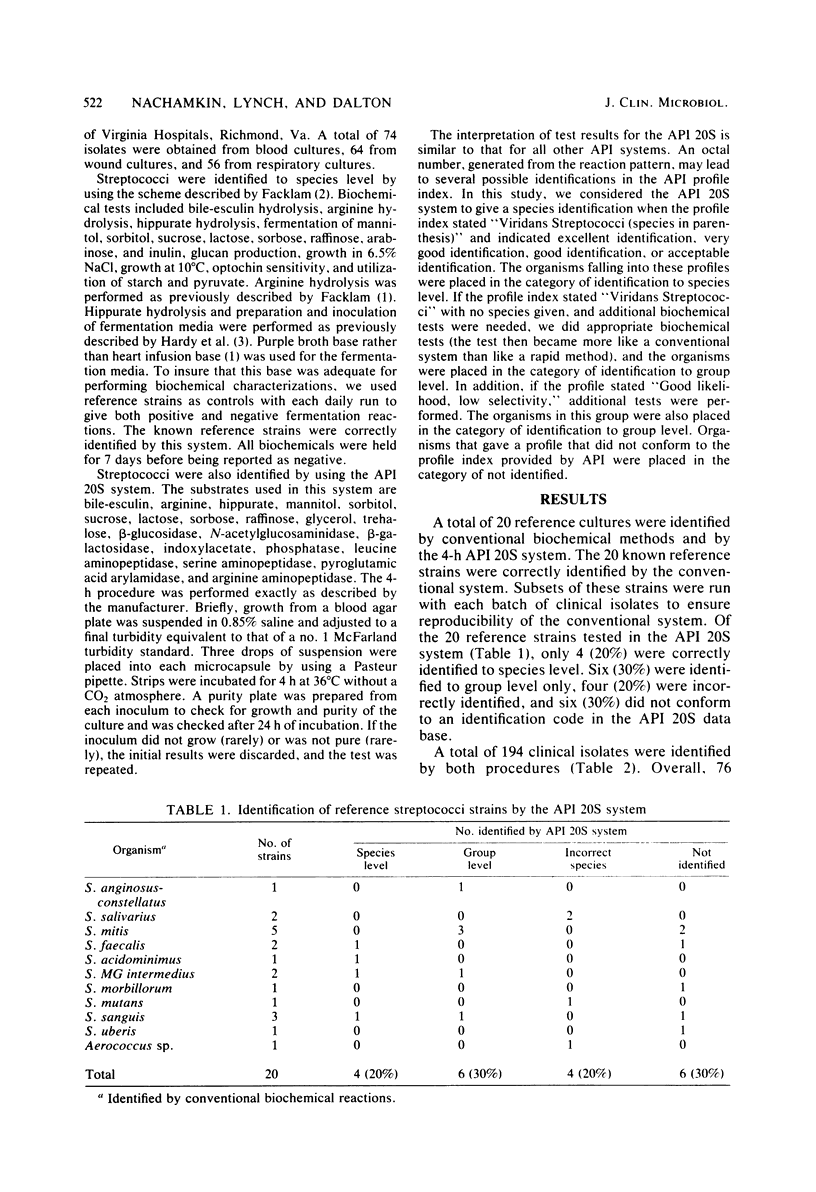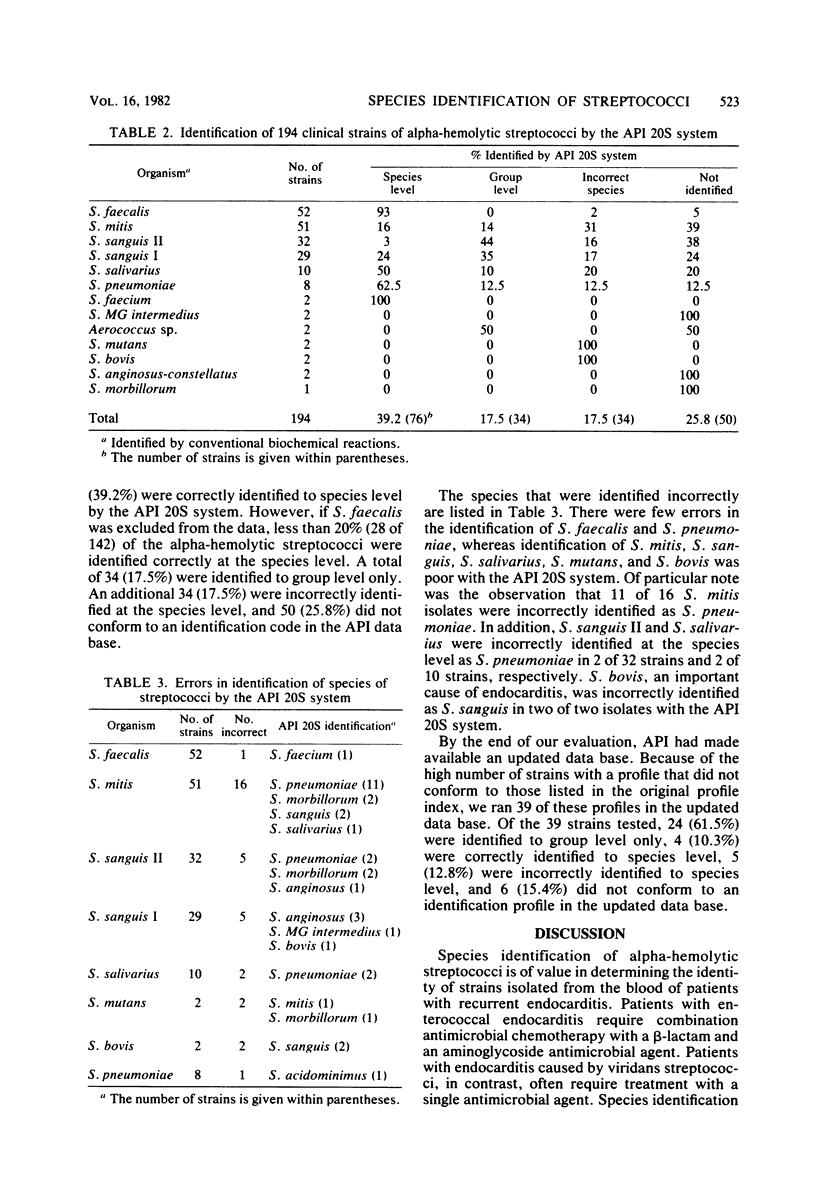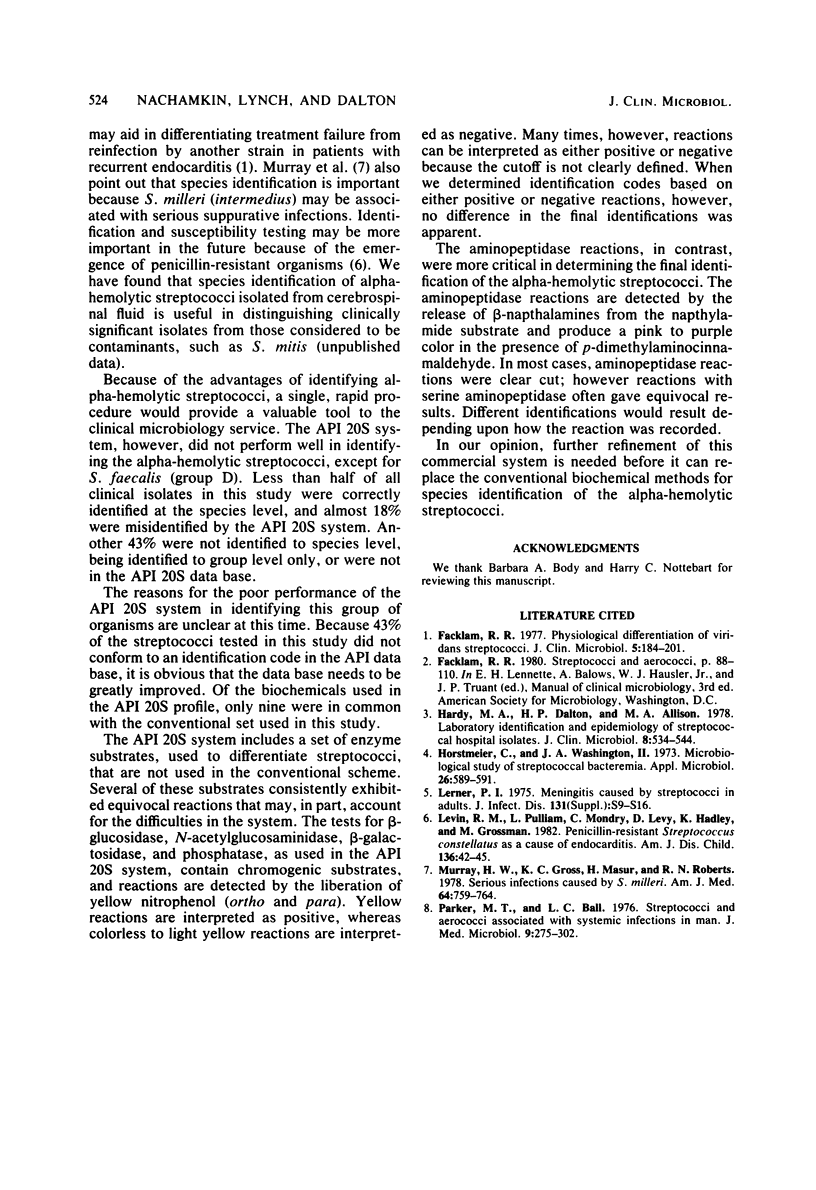Abstract
A new 4-h commercial system (API 20S; Analytab Products, Plainview, N.Y.) for the identification of streptococci was compared with the conventional biochemical profile method in the species identification of alpha-hemolytic streptococci. A total of 194 clinical isolates (including 74 isolated from blood cultures, 64 isolated from wound cultures, and 56 isolated from respiratory cultures) and 20 reference strains were tested. Only 4 of the 20 reference strains were correctly identified to species level by the API 20S system. Six were identified to group level (viridans), four were incorrectly identified, and six did not conform to the identification key. Of the 194 clinical isolates tested, 79 (39%) were correctly identified to species level, 34 (17.5%) were identified to group level, 34 (17.5%) were incorrectly identified, and 50 (25.8%) did not conform to the identification key. Of the 12 different species of alpha-hemolytic streptococci isolated from clinical specimens, the API 20S system consistently identified Streptococcus faecalis and Streptococcus faecium, but consistently misidentified the other 10 species, especially Streptococcus mitis. Our results indicate that for identification to species level, the API 20S system is of little value for alpha-hemolytic streptococci other than enterococci.
Full text
PDF



Selected References
These references are in PubMed. This may not be the complete list of references from this article.
- Facklam R. R. Physiological differentiation of viridans streptococci. J Clin Microbiol. 1977 Feb;5(2):184–201. doi: 10.1128/jcm.5.2.184-201.1977. [DOI] [PMC free article] [PubMed] [Google Scholar]
- Hardy M. A., Dalton H. P., Allison M. J. Laboratory identification and epidemiology of streptococcal hospital isolates. J Clin Microbiol. 1978 Nov;8(5):534–544. doi: 10.1128/jcm.8.5.534-544.1978. [DOI] [PMC free article] [PubMed] [Google Scholar]
- Horstmeier C., Washington J. A., 2nd Microbiological study of streptococcal bacteremia. Appl Microbiol. 1973 Oct;26(4):589–591. doi: 10.1128/am.26.4.589-591.1973. [DOI] [PMC free article] [PubMed] [Google Scholar]
- Lerner P. I. Meningitis caused by Streptococcus in adults. J Infect Dis. 1975 May;131 (Suppl):S9–16. doi: 10.1093/infdis/131.supplement.s9. [DOI] [PubMed] [Google Scholar]
- Levin R. M., Pulliam L., Mondry C., Levy D., Hadley W. K., Grossman M. Penicillin-resistant Streptococcus constellatus as a cause of endocarditis. Am J Dis Child. 1982 Jan;136(1):42–45. doi: 10.1001/archpedi.1982.03970370044011. [DOI] [PubMed] [Google Scholar]
- Murray H. W., Gross K. C., Masur H., Roberts R. B. Serious infections caused by Streptococcus milleri. Am J Med. 1978 May;64(5):759–764. doi: 10.1016/0002-9343(78)90514-4. [DOI] [PubMed] [Google Scholar]
- Parker M. T., Ball L. C. Streptococci and aerococci associated with systemic infection in man. J Med Microbiol. 1976 Aug;9(3):275–302. doi: 10.1099/00222615-9-3-275. [DOI] [PubMed] [Google Scholar]


